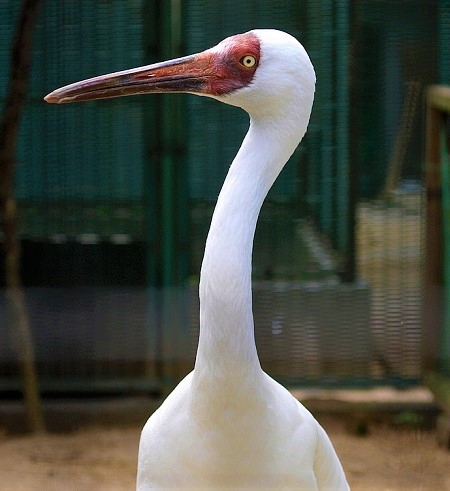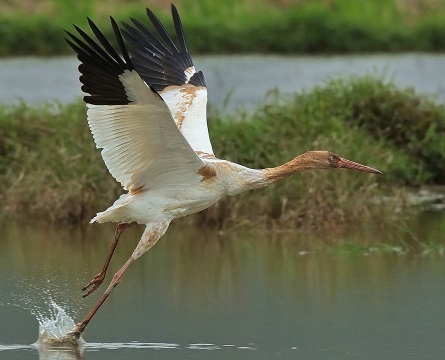Siberian Crane
The Siberian Crane, also known as the Siberian White Crane or the Snow Crane, is a bird in the Crane family. This bird was highly appraised by native people of Siberia, representing sun, spring and kind celestial spirits in their culture.
The Siberian crane is easily identifiable with its fully white plumage, except for the primaries, which are black. And its red mask, which reaches from behind the eyes to the bill. Siberian Cranes have also pinkish legs and unique flute-like calls. The bird stands about 1.4 m tall and has a wingspan of 210 – 230 cm.
The Siberian crane occurs in three distinct populations, the largest of which is the eastern population. This population breeds in the northeast of Siberia and migrates 3,100 miles to the Yangtze River in China to overwinter. The central population breeds in western Siberia and undertakes a 3,700-mile migration to overwinter in Rajasthan in India, mainly at Keoladeo National Park. The western population (which according to estimates done in 2002 contains just 9 birds) migrates just as far to overwinters in Iran at one site on the southern coast of the Caspian Sea and breeds in the northwest of Russia.
Female Siberian cranes lay their eggs between May and mid-June. Although two eggs are usually laid per clutch, just one chick is reared successfully. The Incubation (by both sexes) lasts for almost 29 days and the male Siberian crane takes the primary role in defending the nest against possible danger. Chicks usually fledge at approximately 70– 75 days, and reach sexual maturity by the age of 3 years.
| Place of origin | Russia, India, Iran and China |
| Use | Preservation |
| Weight | Averages 6 kg |
| Egg color | Dark-cream with large red dots |



